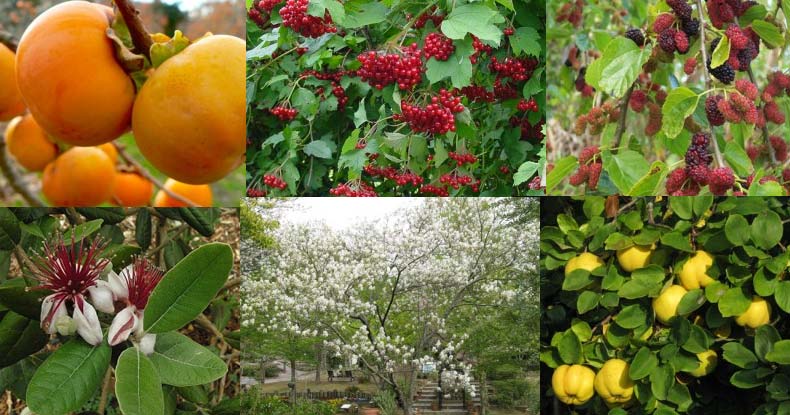10 Beautiful and Unusual Edible Trees and Shrubs to Transform Yards into a Raw Food Paradise
As the movement toward local, sustainable food expands across the nation and around the world, more people are recognizing that our own yards offer plenty of opportunity for growing our own. Edible landscaping is the perfect complement to a vegetable garden.
Edible landscaping simply means planting things around the home that provide both food and ornamental value, and can even function as windbreaks or shade. Popular fruit trees like citrus and figs and peaches are all the rage, but there are several lesser-known trees and shrubs that provide fruit and blend well in the landscape.
Here are 10 fruiting trees and shrubs that should be used more in edible landscape designs. Many of them are tougher than the popular fruit trees like peaches and do not require as much maintenance.
Widget not in any sidebars
Persimmon (Diospyros virginiana). Zones 4 to 9. More common in the South, this attractive tree can grow to 30 ft. tall. They need full sun and well-drained soil. Cultivars like ‘Fuyu’ bear excellent-tasting fruit. Persimmons have beautiful bark and good fall color.
 Pawpaw (Asimina triloba). Zones 5 to 8. This native tree was an important food source for Native Americans, giving it the nickname “Indian Banana.” This is a very attractive tree that lends a tropical appearance with its large leaves. Small maroon flowers give way to yellowish elongated fruits 4-6 inches long. Two genetically distinct trees are needed for successful pollination.
Pawpaw (Asimina triloba). Zones 5 to 8. This native tree was an important food source for Native Americans, giving it the nickname “Indian Banana.” This is a very attractive tree that lends a tropical appearance with its large leaves. Small maroon flowers give way to yellowish elongated fruits 4-6 inches long. Two genetically distinct trees are needed for successful pollination.
Natural and Non-Toxic Products. Up to 50% Off – Every Day (Ad)
Pineapple guava (Feijoa sellowiana). Zones 8 to 10. A large shrub or small tree with beautiful flowers and green, egg-shaped, tropical-tasting fruits that fall to the ground when ripe. The flower petals are edible too, with a sweet, fruity taste. Like the pawpaw, they produce more fruit when two genetically distinct trees are planted in close proximity.
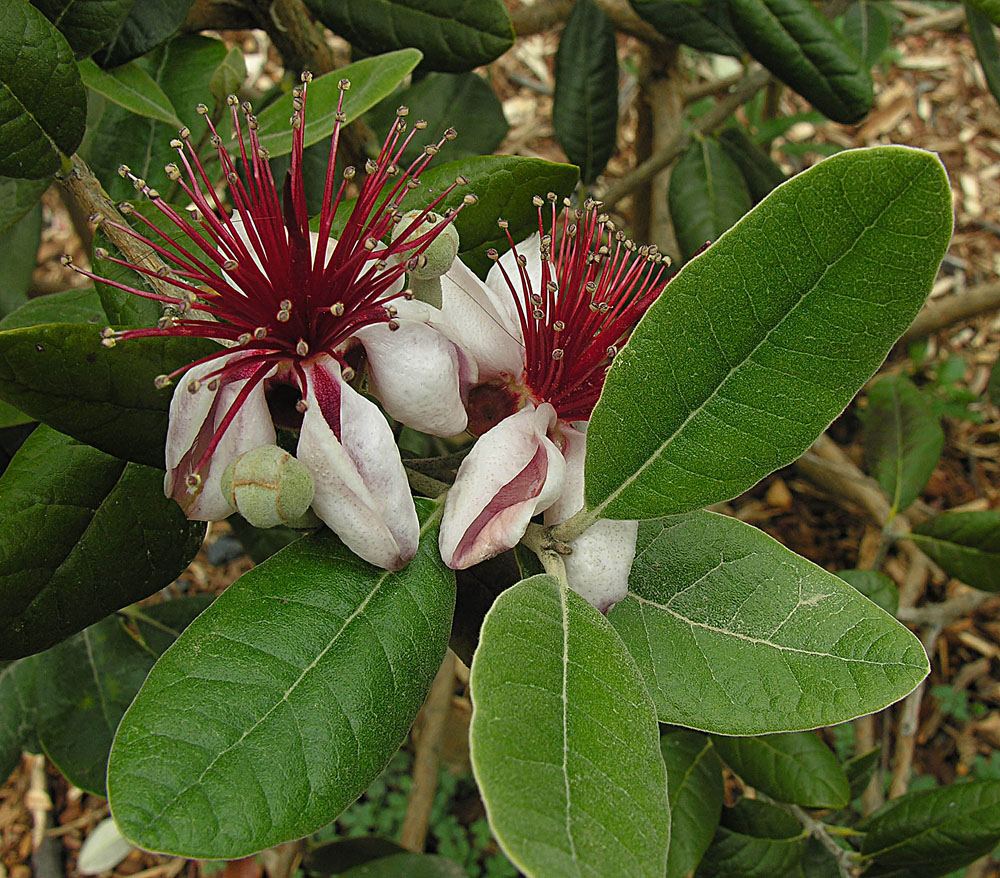 Mulberry (Morus spp.). Zones 5 to 8. Once known as “King of the Tree Crops,” this is another attractive tree for full sun, although they can handle part shade. They are best situated away from patios and decks as the fruit drop can be messy. Cover the ground with a canvas and shake the tree to get the flavorful little fruits that make excellent jelly, wine and desserts.
Mulberry (Morus spp.). Zones 5 to 8. Once known as “King of the Tree Crops,” this is another attractive tree for full sun, although they can handle part shade. They are best situated away from patios and decks as the fruit drop can be messy. Cover the ground with a canvas and shake the tree to get the flavorful little fruits that make excellent jelly, wine and desserts.
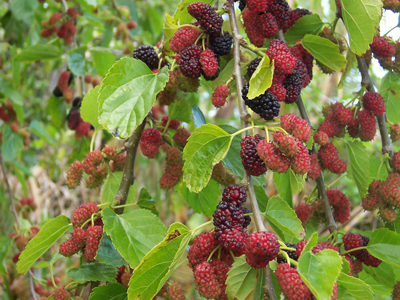 Fruiting quince (Cydonia oblonga). Zones 5 to 9. A small, irregularly shaped tree to about 15 ft. tall that can take an interesting gnarled form with age. Attractive spring flowering adds to the appeal. Quince fruits are fragrant and more commonly used to make jelly.
Fruiting quince (Cydonia oblonga). Zones 5 to 9. A small, irregularly shaped tree to about 15 ft. tall that can take an interesting gnarled form with age. Attractive spring flowering adds to the appeal. Quince fruits are fragrant and more commonly used to make jelly.
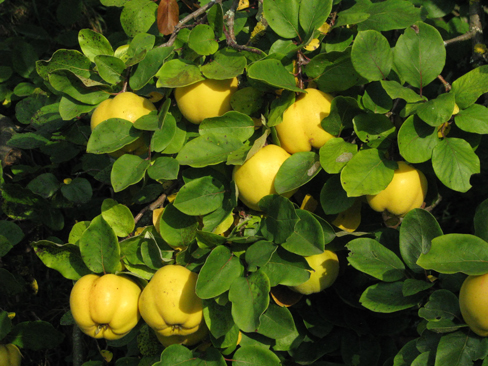 Gooseberries and currants (Ribes spp.). Hardy to zone 3. Several different forms and varieties are sold in nurseries, with red currants and American gooseberries being the most common. These plants prefer partial shade and cool, moist growing conditions with good air circulation. They require more maintenance than other fruiting plants, but their fruits are delicious for pies and jellies.
Gooseberries and currants (Ribes spp.). Hardy to zone 3. Several different forms and varieties are sold in nurseries, with red currants and American gooseberries being the most common. These plants prefer partial shade and cool, moist growing conditions with good air circulation. They require more maintenance than other fruiting plants, but their fruits are delicious for pies and jellies.
Best Selling Vitamins and Supplements on Amazon (Ad)
Juneberry (Amalanchier spp.). Zones 3 to 9. A very attractive small tree to 25 ft. covered in white flowers in spring, with fine-textured leaves that turn red in fall. The small purplish-black ripe fruits are eaten fresh, dried, or used in pies and preserves. Grow juneberries in rich, well-drained acidic soil in full sun, although partial shade is recommended for southern regions.
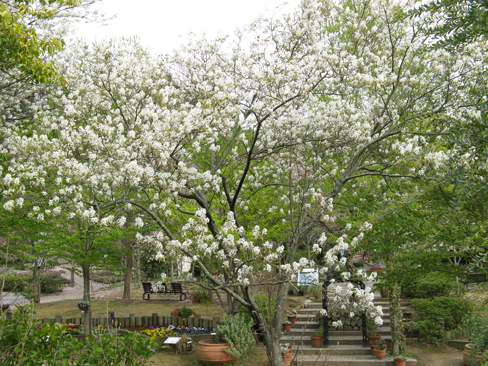 Hardy kiwifruit (Actinidia aruguta). Hardy to zone 4. This is a vining plant with grape-size fruits that have an excellent fresh taste similar to standard kiwis but easier to eat. It is an attractive, vigorous perennial vine, so some kind of trellis or support will be needed. However, make sure to prune properly and keep it in bounds, as it has been known to smother surrounding trees and shrubs.
Hardy kiwifruit (Actinidia aruguta). Hardy to zone 4. This is a vining plant with grape-size fruits that have an excellent fresh taste similar to standard kiwis but easier to eat. It is an attractive, vigorous perennial vine, so some kind of trellis or support will be needed. However, make sure to prune properly and keep it in bounds, as it has been known to smother surrounding trees and shrubs.
Highbush cranberry (Viburnum opulus var. Americana). Zones 2 to 7. A shrub growing to 15 ft. tall with a formal, rounded shape that is well-suited for privacy screens. Flowers and fruits are showy. The small red fruits remain on the plants for a long time and brighten the winter landscape, although they are best harvested earlier for good taste.
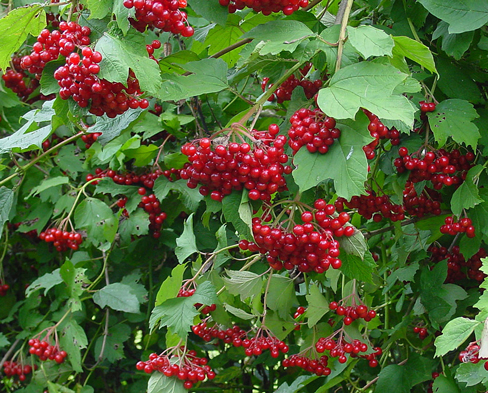 Cornelian cherry (Cornus mas). Zones 5 to 8. This is a small, upright trees to 15 ft. tall with attractive bark, flowers, and fall color. Although full sun is preferred, they do quite well in partial shade underneath larger trees. The fruits ripen to a dark maroon and are excellent for jellies, tarts, and sweetmeats.
Cornelian cherry (Cornus mas). Zones 5 to 8. This is a small, upright trees to 15 ft. tall with attractive bark, flowers, and fall color. Although full sun is preferred, they do quite well in partial shade underneath larger trees. The fruits ripen to a dark maroon and are excellent for jellies, tarts, and sweetmeats.
Justin Gardner writes for TheFreeThoughtProject.com
